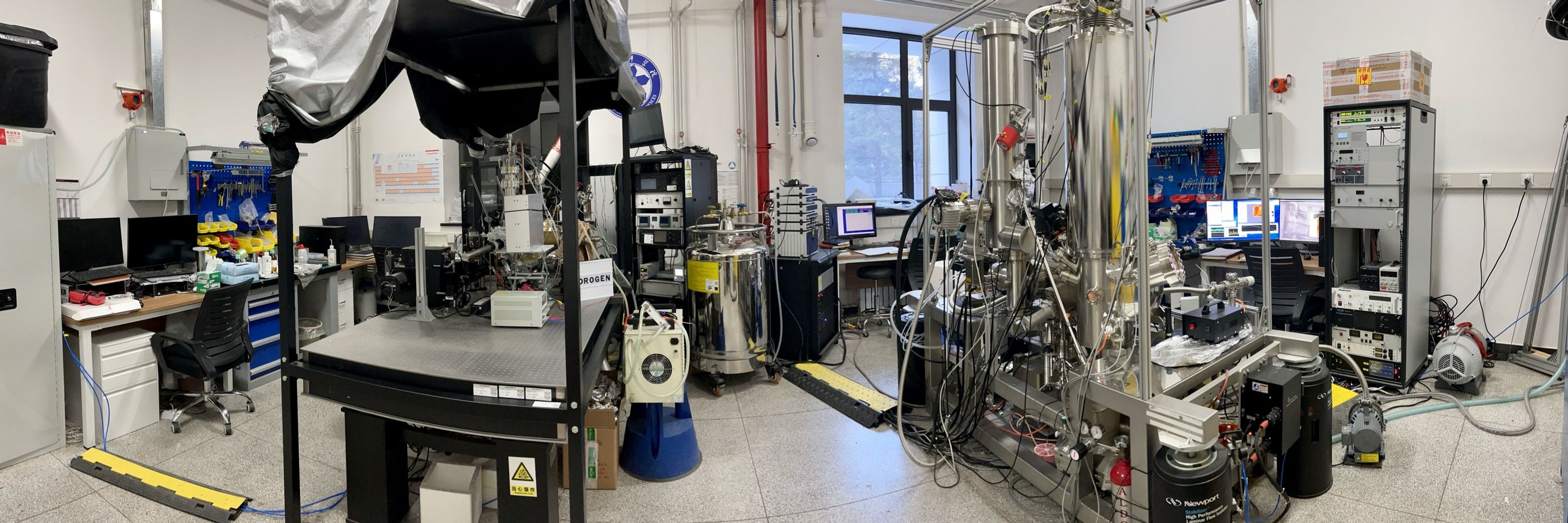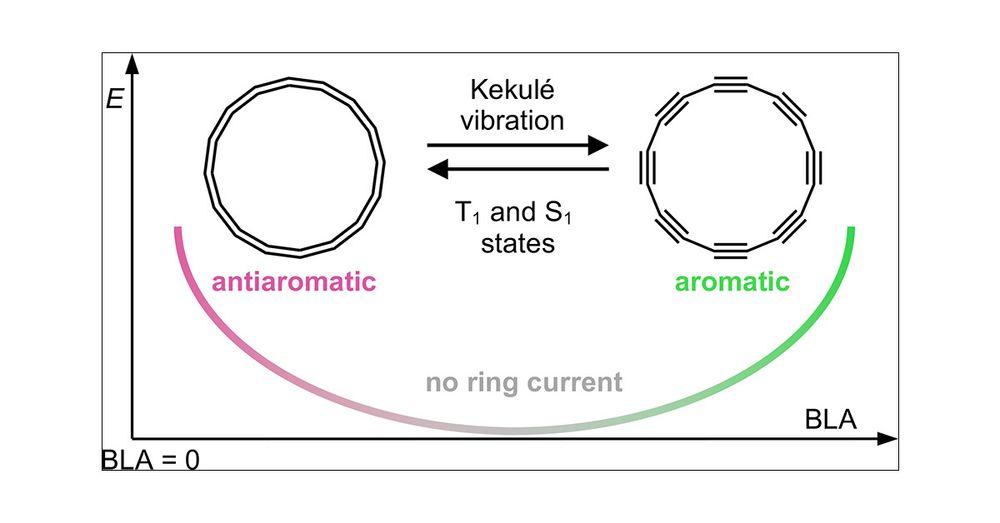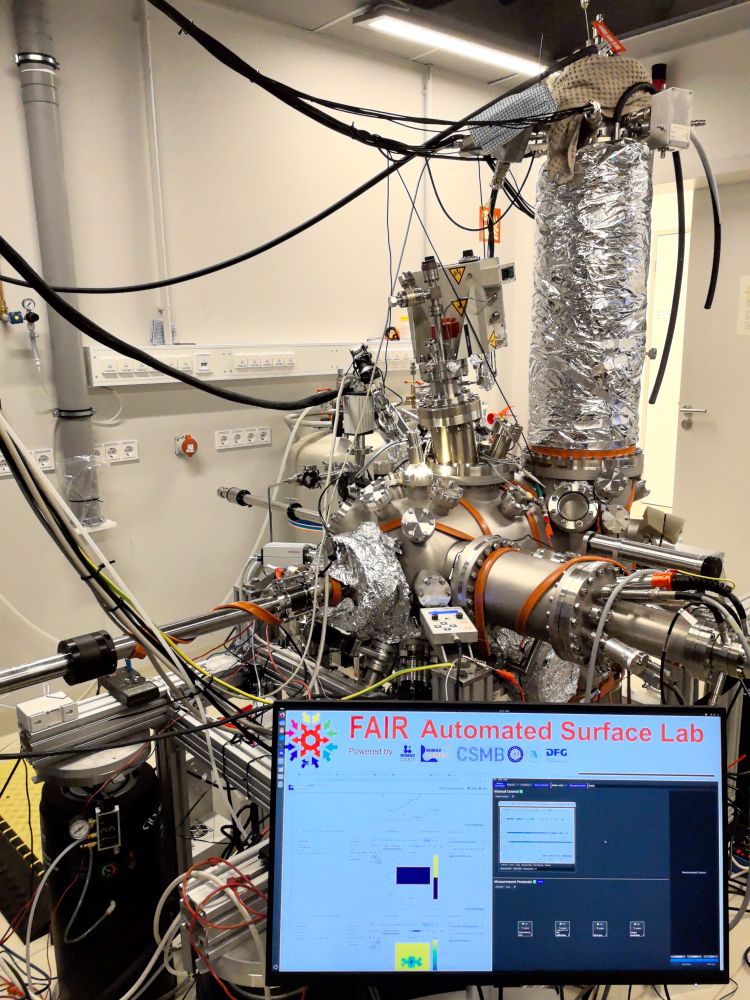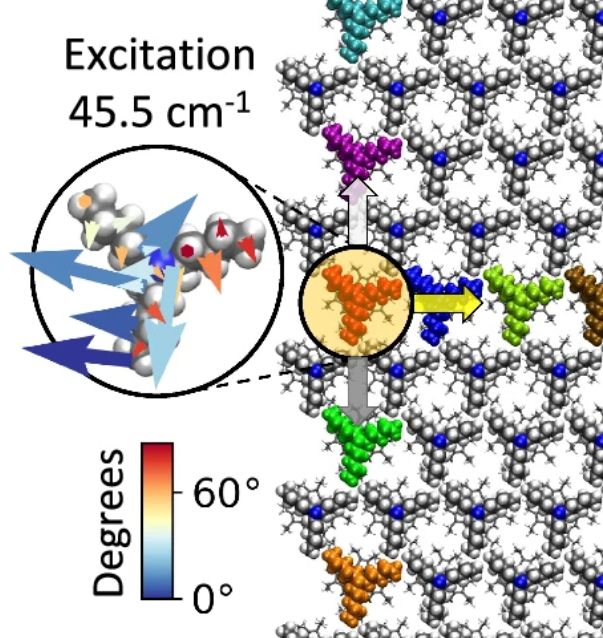
PalmaLab
@palmalab.bsky.social
510 followers
710 following
37 posts
@CAPalma.bsky.social Lab for Atomic-scale #Quantum #Nanomaterials @HUBerlin and Atomically-Precise Molecular Architecture Devices at Interfaces @IOP Beijing #ChemicalPhysics #ChemPhys #Physics #Chemistry #SurfaceScience http://palmalab.org ex- #SciTwitter
Posts
Media
Videos
Starter Packs
Pinned
PalmaLab
@palmalab.bsky.social
· Apr 25
PalmaLab
@palmalab.bsky.social
· Apr 25
PalmaLab
@palmalab.bsky.social
· Apr 3

Aromaticity Reversal Induced by Vibrations in Cyclo[16]carbon
Aromaticity is typically regarded as an intrinsic property of a molecule, correlated with electron delocalization, stability, and other properties. Small variations in the molecular geometry usually result in small changes in aromaticity, in line with Hammond’s postulate. For example, introducing bond-length alternation in benzene and square cyclobutadiene by modulating the geometry along the Kekulé vibration gradually decreases the magnitude of their ring currents, making them less aromatic and less antiaromatic, respectively. A sign change in the ring current, corresponding to a reversal of aromaticity, typically requires a gross perturbation such as electronic excitation, addition or removal of two electrons, or a dramatic change in the molecular geometry. Here, we use multireference calculations to show how movement along the Kekulé vibration, which controls bond-length alternation, induces a sudden reversal in the ring current of cyclo[16]carbon, C16. This reversal occurs when the two orthogonal π systems of C16 sustain opposing currents. These results are rationalized by a Hückel model which includes bond-length alternation, and which is combined with a minimal model accounting for orbital contributions to the ring current. Finally, we successfully describe the electronic structure of C16 with a “divide-and-conquer” approach suitable for execution on a quantum computer.
pubs.acs.org
PalmaLab
@palmalab.bsky.social
· Apr 2
PalmaLab
@palmalab.bsky.social
· Apr 2
Reposted by PalmaLab
Nature Synthesis
@natsynth.nature.com
· Feb 21

Building spin-1/2 antiferromagnetic Heisenberg chains with diaza-nanographenes - Nature Synthesis
Graphene nanostructures with π magnetism offer a chemically tunable platform to explore correlated magnetic interactions. Here, the on-surface synthesis of spin-1/2 antiferromagnetic Heisenberg chains...
www.nature.com
PalmaLab
@palmalab.bsky.social
· Jan 23
PalmaLab
@palmalab.bsky.social
· Jan 19
PalmaLab
@palmalab.bsky.social
· Jan 18
Reposted by PalmaLab
PalmaLab
@palmalab.bsky.social
· Jan 7
Reposted by PalmaLab
C.-A. Palma
@capalma.bsky.social
· Jan 5
The Nobel Prize-winning chemist, Martin Karplus, has passed away. A pioneer in the theory and computation of the dynamics of macromolecules. 🧪 #ChemSky

PalmaLab
@palmalab.bsky.social
· Dec 17
PalmaLab
@palmalab.bsky.social
· Dec 12
PalmaLab
@palmalab.bsky.social
· Dec 12
Our latest www.nature.com/articles/s41... marks piece no. 8 since our first NC piece 9y ago www.nature.com/articles/nco... –Therein we proposed that a molecule trapped in a 2D MOF pore could function as a thermal memory at the atomic scale–the smallest container storing thermodynamic states 1/n










